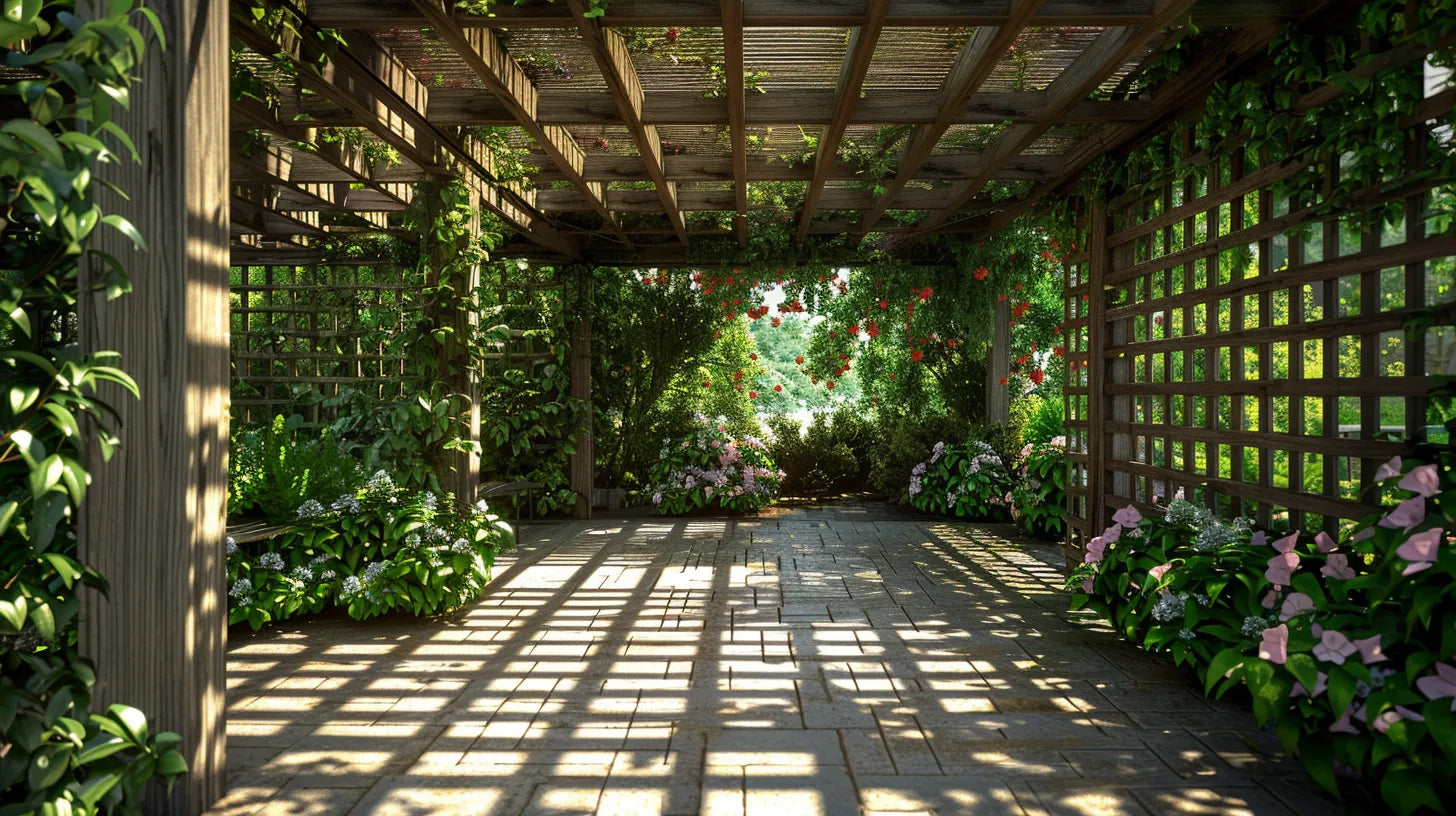Effective pergola shade design combines aesthetics with functionality, using materials such as wood, aluminum, and vinyl to create durable and attractive structures. Orientation is vital; north-facing pergolas provide consistent shade, enhancing comfort levels in various climates. Selecting the right plants, like fast-growing wisteria , not only boosts shade but also adds to the visual appeal and atmosphere of the space. Integrative elements like retractable canopies or climbing plants can adjust the amount of sunlight filtering through, offering flexibility throughout the seasons. By understanding these components, one reveals a new layer of design sophistication in creating enjoyable outdoor spaces .
Understanding Pergola Structures
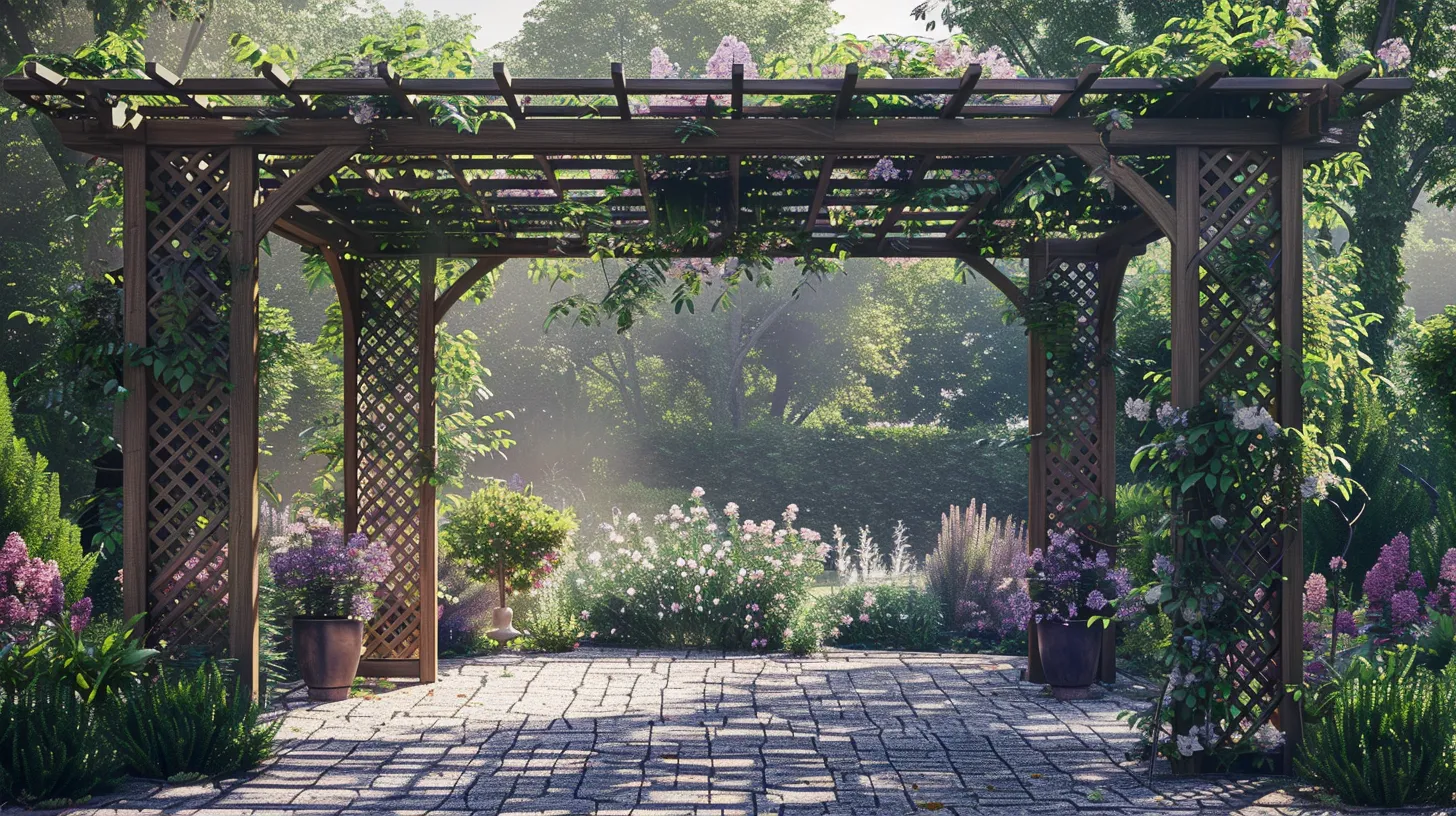
Pergolas, characterized by their vertical posts , cross-beams , and open lattice , serve both essential and aesthetic purposes in architectural design. This structure, with its roots in ancient civilizations, has evolved to not only provide a cool shaded area but also enhance the visual appeal of outdoor spaces. The strategic use of vertical posts and cross-beams supports the weight of the lattice, which can be adjusted to control the amount of sunlight exposure . This important placement is vital for maintaining comfort while maximizing usability throughout different times of the day and seasons.
The open lattice design of pergolas allows for a versatile interaction with natural light , creating patterns that add an artistic touch to the functionality of the structure. It's this combination of utility and beauty that elevates the overall value of the pergola, making it a coveted feature in modern landscape architecture . Additionally, the aesthetics of the pergola can be tailored to complement any architectural style , further enhancing its value and appeal.
As such, pergolas stand out as not just simple architectural features but as crafted elements that reflect a deep understanding of both art and science in design. Their ability to merge historical significance with contemporary needs makes them an enduring choice in architecture.
Optimal Orientation for Shade
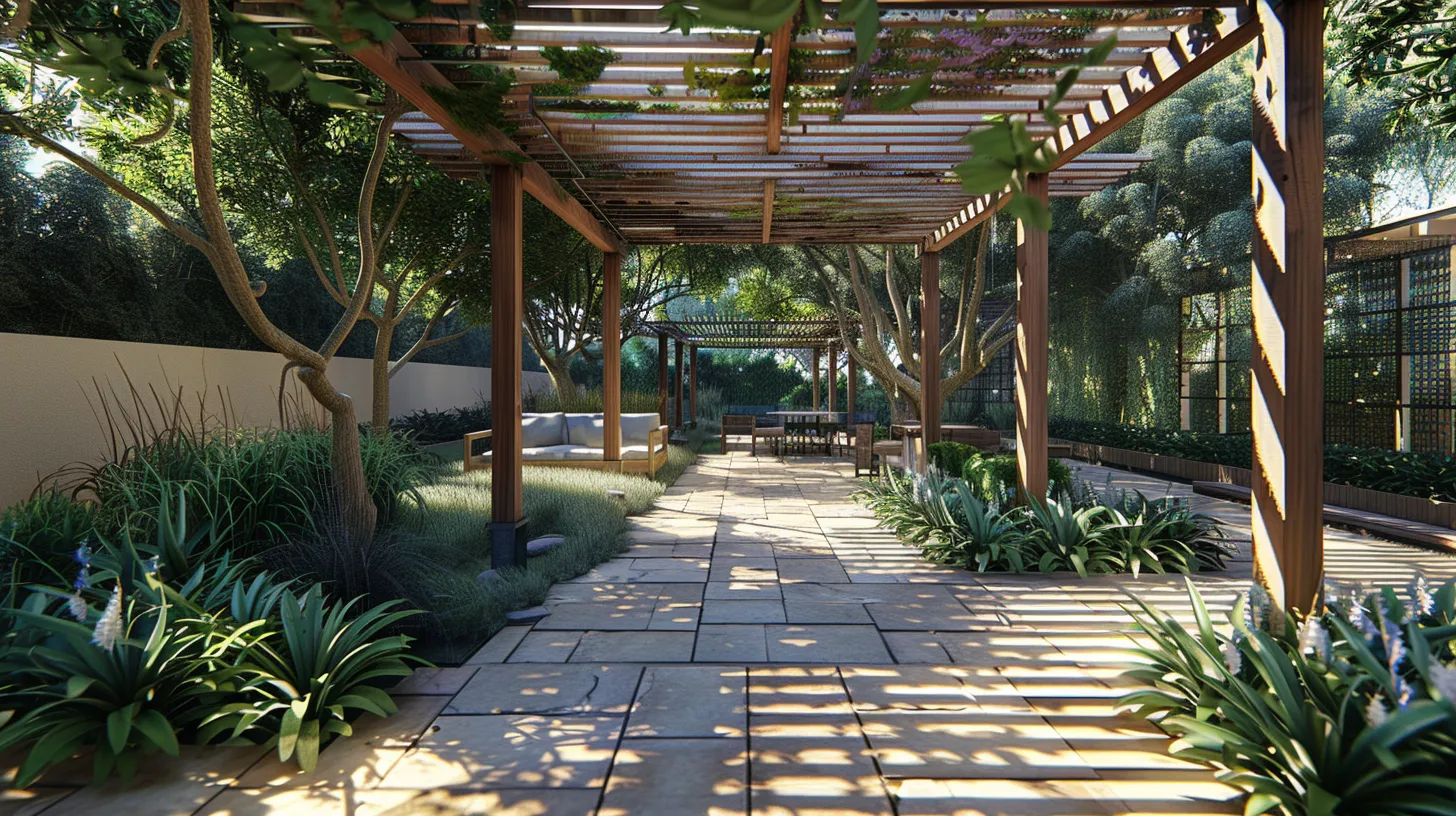
To achieve ideal shade, the orientation of a pergola is an important consideration, especially in hot climates where north-facing structures can provide consistent relief from the sun. The ideal positioning of a pergola not only impacts the shade levels but also greatly enhances comfort in outdoor spaces. By strategically planning the placement of the pergola, one can guarantee a balanced retreat that remains cool and shaded throughout the varying intensities of daily sunlight.
In hot climates, the intensity of the sun can make outdoor areas uncomfortably warm. The careful orientation of pergolas, thus, becomes one of the essential factors in creating a livable outdoor environment . North-facing orientations generally capture excellent shade, minimizing direct sunlight during peak hours, which is essential for maintaining cooler ambient temperatures.
Furthermore, making directional adjustments to the pergola's layout can adapt to the sun's path, optimizing shade levels as the sun moves. Such adjustments ensure that the shaded area remains effective and functional from morning to evening, providing a continuously comfortable space. This thoughtful approach to the positioning and orientation of pergolas transforms them into more than just aesthetic features; they become indispensable components of climate-responsive design in outdoor living areas.
Material Selection for Pergolas
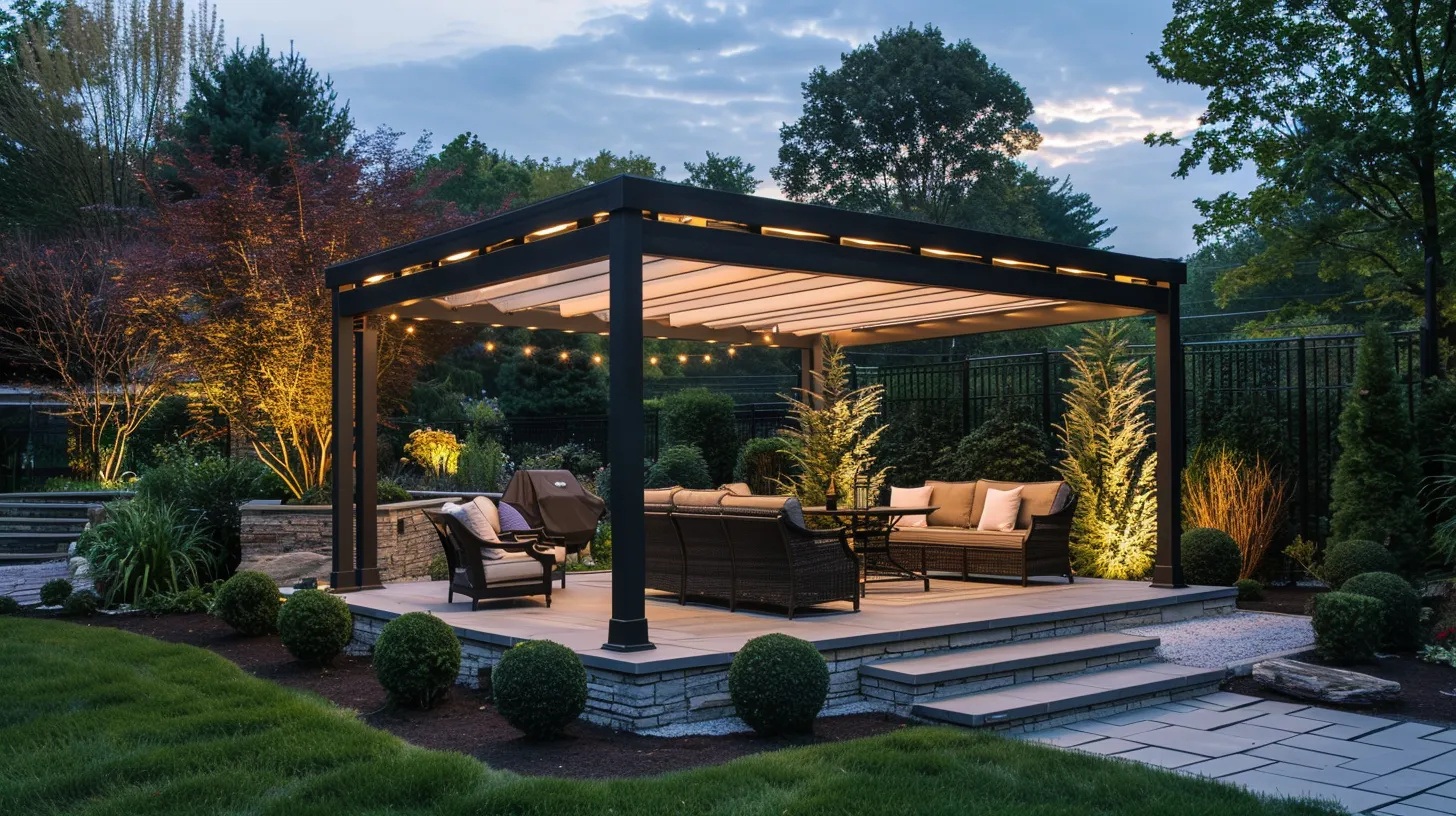
Selecting the right materials for pergolas is essential for balancing functionality, maintenance, and aesthetic appeal. When designing outdoor structures, the choice of materials influences not only the durability and upkeep but also the effectiveness of shade provided and the overall aesthetics. Wood, such as cedar and redwood , is highly valued for its natural beauty and the warm, inviting ambiance it adds to pergola designs. However, wood requires considerable maintenance to maintain its appearance and structural integrity over time.
Aluminum, on the other hand, presents a cost-efficient alternative for pergola construction. It offers excellent durability and sufficient shade coverage with the added benefit of minimal maintenance , making it a practical choice for many homeowners. Vinyl is another budget-friendly material that provides good shade coverage . While it lacks the natural aesthetic of wood, vinyl is resilient and easy to maintain , appealing to those who prioritize functionality and cost-efficiency.
Fiberglass, though more expensive, stands out for its longevity and superior shade coverage . This material combines the practical benefits of minimal upkeep with robust performance, making it an excellent choice for those looking to invest in long-lasting outdoor structures. Each material option offers unique benefits, allowing customization based on individual needs and preferences in pergola design.
Plant Choices for Natural Shade
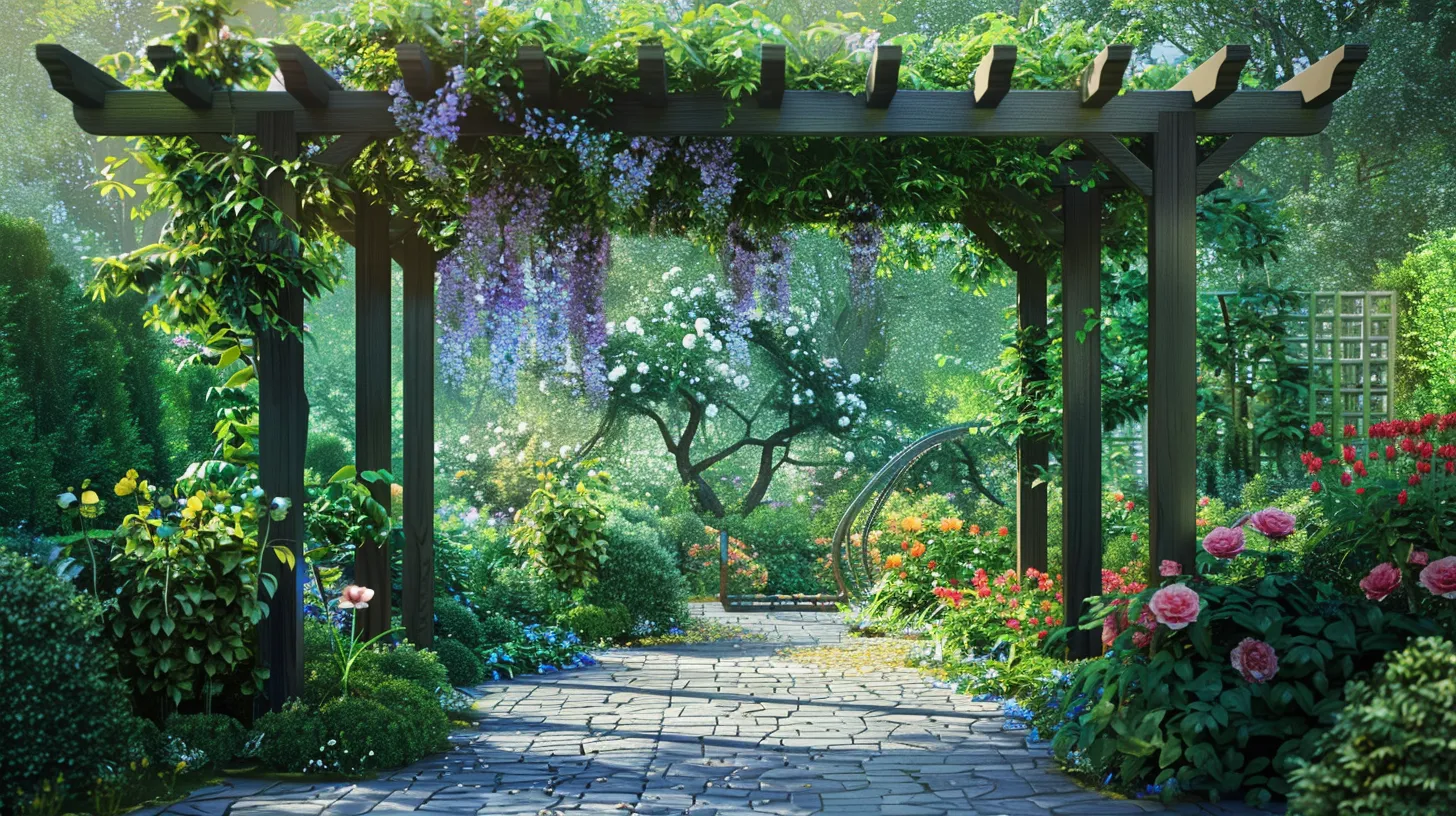
Incorporating fast-growing climbers such as wisteria into pergola designs can swiftly augment shade coverage and enhance aesthetic appeal. The lush, dense foliage of climbing plants not only increases the level of shade but also integrates a vibrant touch of greenery into outdoor spaces. This natural shade enriches the comfort and usability of areas beneath the pergola, making them ideal for relaxation or social gatherings.
Selecting the right climbing plants is essential for pergola shade design. The plant selection directly influences both the speed at which shade is established and the extent of coverage achieved. Rapid-growing climbers require regular maintenance, including frequent trimming, to manage their growth and maintain an ideal shade. Without such care, the plants can quickly become unruly and less effective at providing the desired shade.
Using climbers for creating natural shade on a pergola not only offers functional benefits but also enhances the overall aesthetic of the space. The integration of natural elements into architectural designs like pergolas adds a dynamic and organic character, making outdoor spaces more inviting and enjoyable.
Enhancing Shade With Accessories
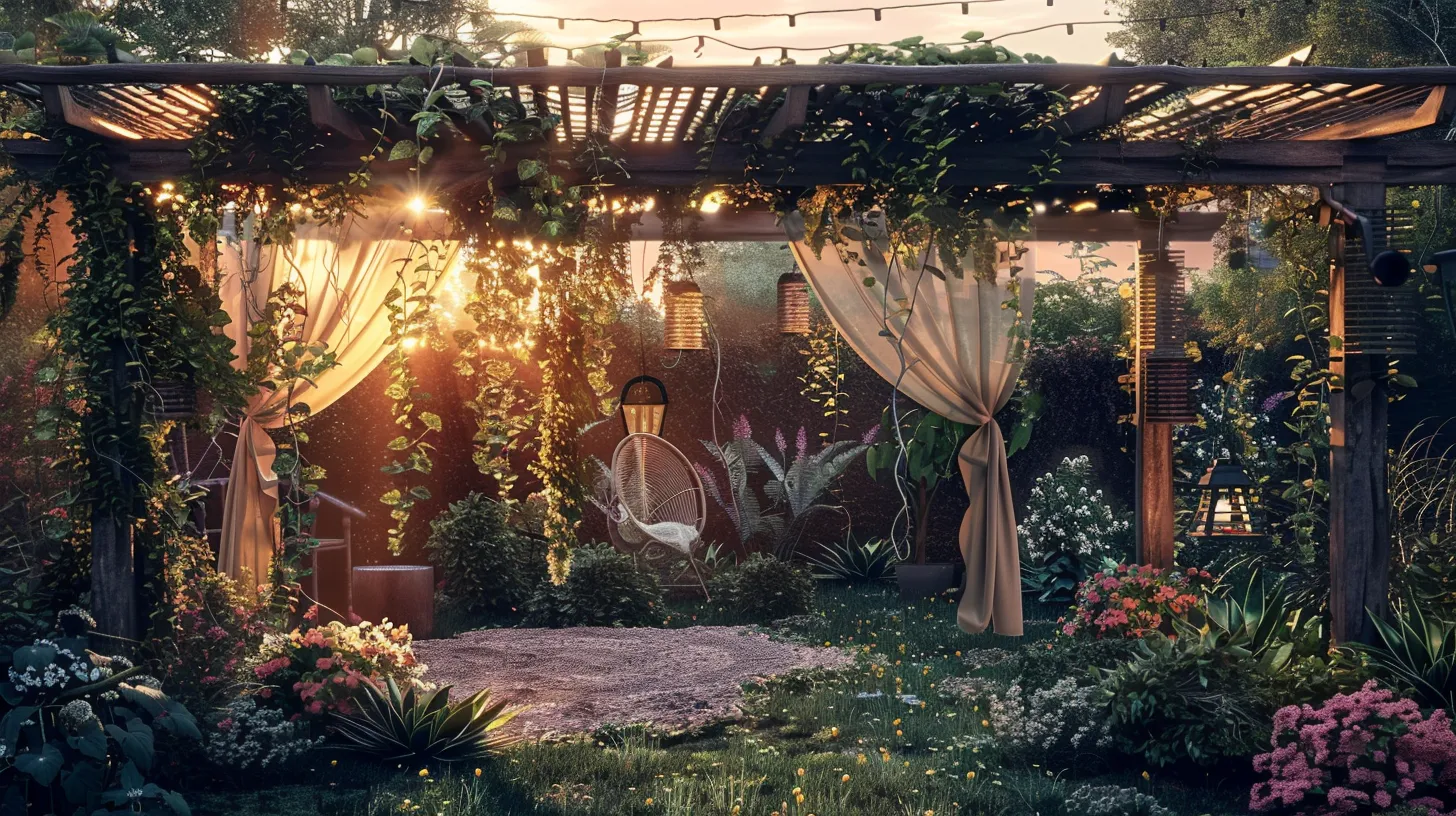
Enhancing shade for pergolas can be effectively achieved through the addition of versatile accessories such as retractable canopies and outdoor curtains . These options not only contribute to the overall aesthetics of the patio but also offer adjustable comfort levels , allowing homeowners to modulate shade based on the sun's position and intensity. Retractable canopies are particularly beneficial for their ease of use and ability to provide immediate shade or sunlight with minimal effort.
Bamboo blinds represent another practical accessory, introducing a natural, eco-friendly element to the pergola's design. They are ideal for those seeking a blend of traditional and contemporary styles, enhancing both the comfort and appearance of the outdoor space. Similarly, thatched roofs can transform a standard pergola into a tropical haven, effectively blocking intense sunlight while maintaining a cool ambiance beneath.
Moreover, integrating climbing plants adds a dynamic component to pergola shade. These plants naturally grow to cover the structure's lattice , progressively increasing the shaded area. For an innovative approach, installing solar panels offers dual benefits: they serve as a modern shading option while generating renewable energy , aligning functionality with sustainability in pergola design.
Design Principles for Maximum Comfort
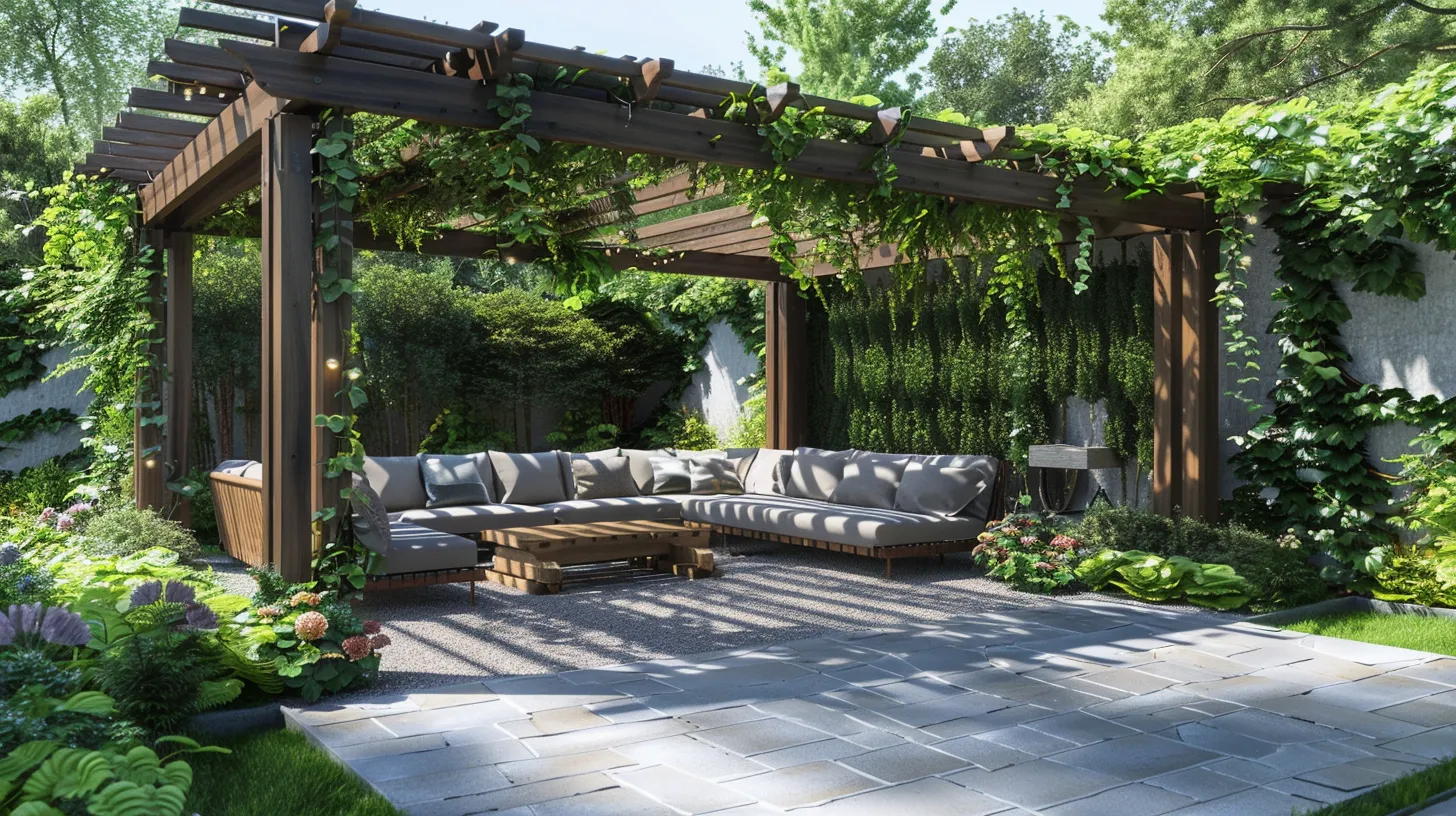
To achieve maximum comfort in pergola design, it is important to take into account the orientation and material choice to guarantee consistent and effective shading throughout the day. Optimizing orientation ensures that the structure takes advantage of the sun's path, providing ample shade and reducing direct sunlight exposure, which is essential for a pleasant comfort experience. Materials selection plays a significant role in enhancing shade levels; using options like thick wooden beams or reflective metal can greatly improve the effectiveness of the shade provided.
Incorporating climbing plants not only increases shade coverage but also adds a dynamic, natural element to the pergola design. This integration of greenery can create a cooler microclimate and enhance the overall aesthetic, effectively balancing aesthetics with functionality. Architectural considerations are key in pergola design, focusing on the layout and structure to control sunlight exposure strategically. By adjusting the spacing and angles of the slats or using adjustable panels , one can customize the amount of light and shade to suit different times of the day or specific activities, ensuring an ideal comfort experience within the outdoor space .
Seasonal Considerations in Design
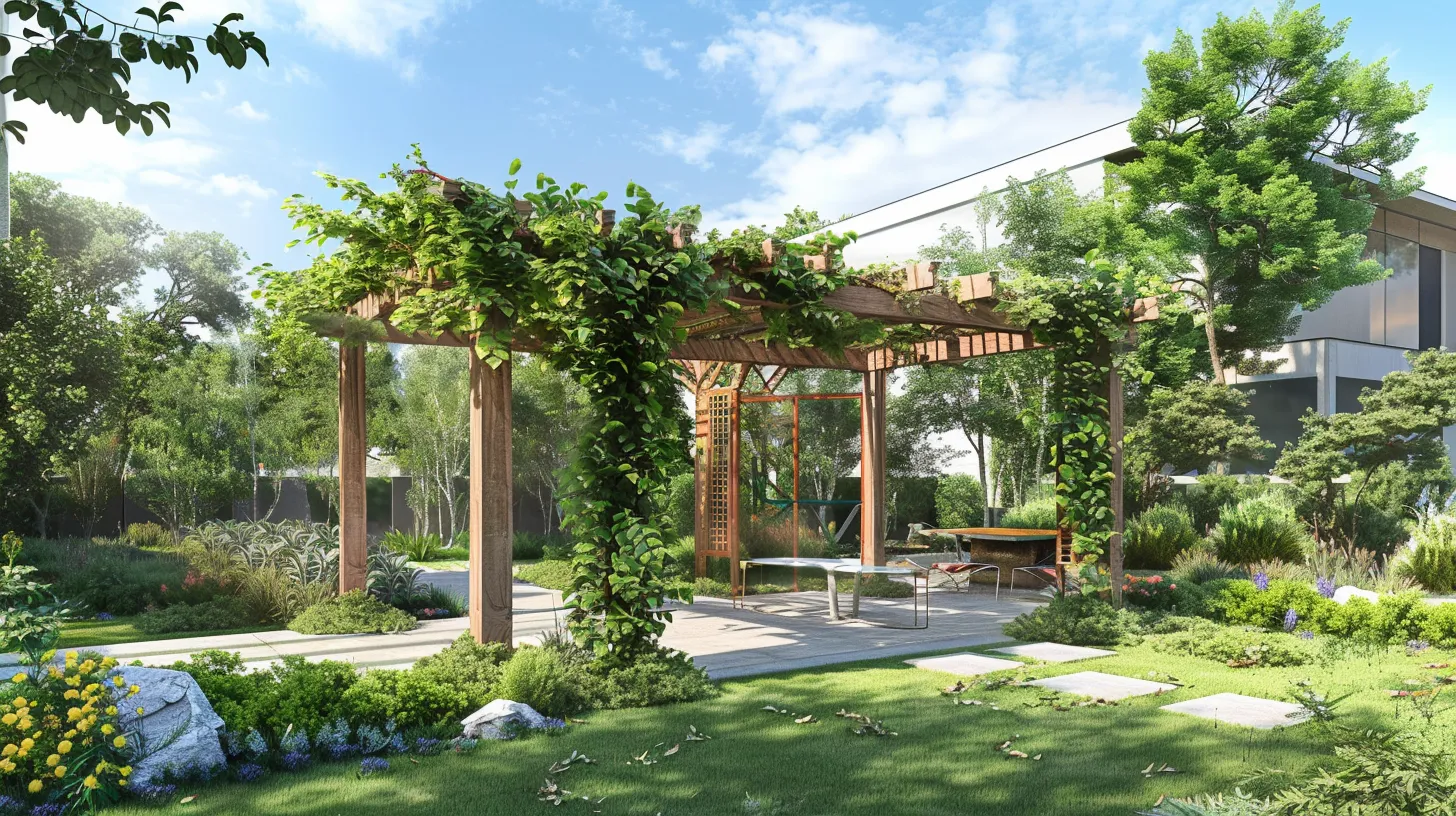
Seasonal variations greatly impact pergola design, necessitating adaptations in structure and material to guarantee comfort throughout the year. One important aspect is the orientation adjustment of the pergola to maximize shade during the intense heat of summer while allowing sunlight during colder months. This strategic positioning is vital for effective shade control and temperature regulation .
Incorporating deciduous climbing plants is a natural solution for providing shade. These plants are particularly beneficial as they offer dense foliage in summer to block out heat, yet shed their leaves in winter, permitting sunlight to pass through and warm the space. Selecting best-suited materials also plays a significant role in seasonal adjustments. For instance, aluminum is favored for its durability and minimal maintenance, while wood offers a classic aesthetic and natural insulation properties.
Additionally, adjustable louvred roofs provide a modern solution to managing sunlight angles throughout the year. These structures can be angled to offer more or less coverage as needed, enhancing comfort levels considerably. Removable shades or curtains further contribute to this versatility, allowing for quick and easy seasonal adjustments to adapt to varying levels of sunlight, thereby ensuring that the pergola remains a functional and enjoyable space regardless of the season.
Maintenance Tips for Longevity
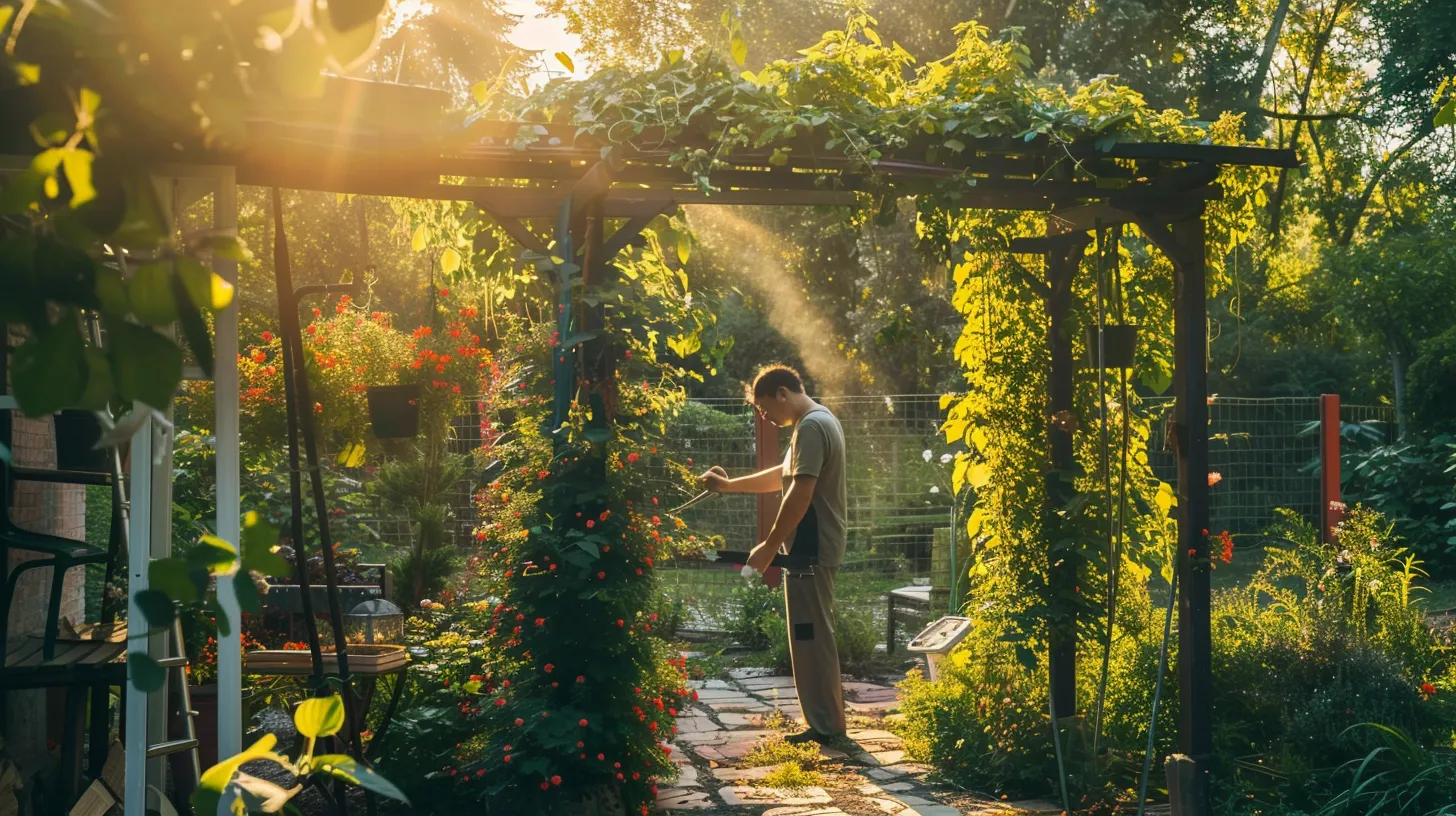
Ensuring the longevity of a pergola requires regular maintenance , including inspections for structural integrity and environmental damage. Regular maintenance is important, focusing on checking for signs of rot , termites, and rust, which are common issues that can compromise the pergola's durability. Inspecting for wear and tear not only identifies current problems but also helps in forecasting potential future damages, thereby averting expensive repairs.
Cleaning and treating the pergola with suitable products are essential in protecting it against harsh weather conditions and pollutants, effectively extending its lifespan . This includes applying sealants or protective coatings that form a barrier against moisture and ultraviolet light, preserving the wood or metal's integrity and appearance.
Timely repairs play a critical role in the care regimen. Addressing issues such as loose fittings or eroded materials promptly can prevent further damage, ensuring that the pergola remains both functional and safe for years. By adhering to these maintenance strategies—inspecting, cleaning, treating, and repairing—you can significantly extend the life of your pergola while maintaining its aesthetic appeal and structural integrity.


